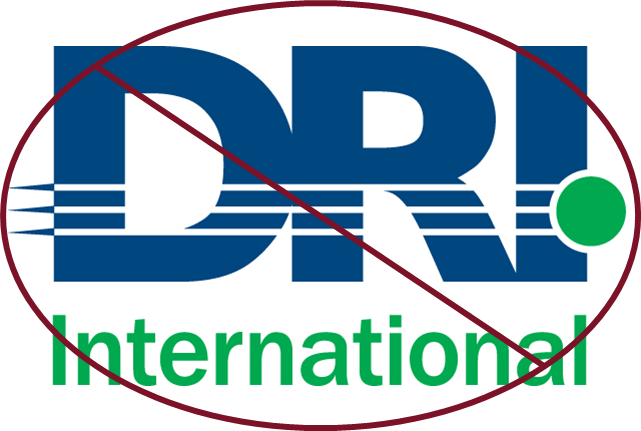Before You Buy Resilience Software, Read This
Let’s get something straight:
The resilience software market is long overdue for a reckoning.
For years, enterprise platforms like Fusion Risk, RSA Archer, and BC in the Cloud (BCIC) have positioned themselves as the gold standard for business continuity and crisis management. They promise flexibility and maturity—yet, in my experience, they often deliver bloated architectures, outdated templates, and UIs that feel like they were designed before the smartphone existed.
And the pricing?
These platforms can easily charge six figures just to get started. Then come the “extras”: implementation fees, integration costs, training packages, ongoing support, and endless consulting hours. Before you know it, you’re sinking budget into a system your team barely uses.
Built for Consultants, Not for Crises
These systems weren’t literally built by PwC or Deloitte—but they may as well have been. In my opinion, their architecture reflects a consulting-first mindset: checkbox-heavy, audit-centric, and painfully rigid.
They’re optimized for reviews, not real-world response. The result? Endless dropdowns. Disjointed modules. Workflows that make sense on a flowchart but collapse in a crisis.
What Real Users Are Saying
This isn’t marketing spin—these are direct quotes from real-world users:
RSA Archer
- “Complex, not user friendly, and bulky. The interface just looks old… like opening an old Nintendo system from 1990.”
- “There are way too many screens. A new user can get lost and would need a lot of help.”
Fusion Framework
- “Implementation is complex. Customizations require help from Fusion support every time.”
- “It’s powerful, but so bloated. Every time we want to do something simple, we end up stuck in configuration hell.”
BC in the Cloud (BCIC)
While once known for flexibility and price, BCIC’s newer version tells a different story:
- “To get the most from the tool, one really needs to have HTML/Java-type knowledge… If you don't, you have to rely on their support team.”
- “The plan-building feature is a little archaic, but it gets the job done.”
- “Advanced reporting capabilities are limited… need separate test environment—adds overhead.”
In my view, the low-code flexibility that BCIC was once praised for is largely gone. What’s left is a system where simple tasks feel over-engineered, overly technical, and support-dependent. Not exactly the agile solution today’s resilience teams need.
What People Actually Want
From years in the trenches, I’ve seen that resilience teams consistently are looking for:
- Fast onboarding – not six-month implementation timelines
- Intuitive UI – no screen mazes, no friction
- Component-based solutions – not massive, inflexible suites
- Templates that match how the business actually operates or the ability to create their own templates
- Process-driven workflows – built for continuity, not just compliance
Start with Design, Not with a Demo
One of the biggest mistakes organizations make is buying software before they’ve defined what their program should be.
Before you take a single demo, design your program. Build your templates. Outline your workflows. Know what you need.
Too often, organizations reverse that process: contorting their strategy to fit whatever tool they just purchased. That’s how you end up with rigid plans, awkward workarounds, and low adoption.
Every organization is different. Culture, structure, and decision-making vary widely—and your resilience program should reflect that. Tools should support your model, not impose theirs.
Executives Quit Before Your Implementation Does
Another hard truth: many resilience program sponsors may not survive long enough to see the tools they buy actually implemented.
Multi-year implementations don’t just waste time, they burn political capital. One landmark study found that one in six large-scale IT projects becomes a “Black Swan,” overrunning costs by 200% and timelines by nearly 70%. When that happens, the executives who sponsored the project are often replaced before the tool ever delivers value.
In our direct experience, we’ve seen this play out:
- A BC/CM director champions a new system.
- Implementation stalls.
- Leadership changes.
- The program loses momentum or worse, gets shelved entirely.
Projects fail not just from bad tools, but from fatigue. Executive support erodes with every missed milestone. In many cases, if you're still configuring when your sponsors have mentally moved on, you’re running uphill.
This is why the process must be practitioner-led and designed up front. You need clarity before you spend. Otherwise, you’ll be rebuilding under new leadership anyway.
The Practitioner-Built Difference
This is exactly why we’ve built tools differently.
At PAI Consulting, we don’t build for certifications, audits, or shelfware. We build for functionality, speed, and survival. We’ve led real response teams. We’ve seen legacy platforms fail under pressure. And we’ve used that frustration to build better tools.
Our suite includes:
- Scenario TTX – A smarter, AI-powered tabletop engine that generates dynamic injects, adapts to real-time decisions, and produces actionable after-action reports—cutting prep time while raising engagement.
- Business Resilience Navigator – A maturity assessment and roadmap tool that delivers strategic clarity. It moves beyond compliance checklists and helps organizations build a resilience program grounded in actual capabilities.
- Resilience Planner Studio (coming Q3 2025) – A modern, modular planning engine for continuity, risk, and crisis workflows. Studio is our take on the now-defunct (and missed) Sustainable Planner platform, giving teams full control to build, assign, and manage their own planning templates, assessments, and logic—without being boxed in by vendor limitations.
- Resilience Planner 360 (coming late 2025) – Our full-scale, response-ready platform built on our Realistic Resilience framework. Unlike rigid platforms built for auditors, 360 helps teams plan, test, and respond in real time. It supports BIAs, AIAs, playbooks, CMT role assessments, and incident tracking—all tied together by a framework that reflects how organizations actually operate during disruption.
Each tool is practitioner-tested, modular, and designed for the way real resilience work gets done—fast, focused, and grounded in operational truth.
The Market Is Shifting
Organizations are waking up. They’re tired of:
- Paying top dollar for slow, bloated systems
- Letting software vendors and consulting partners dictate workflows
- Spending six months to over three years on implementation only to realize no one’s using the tool
The next wave of resilience software will be practitioner-led. Lean. Responsive. Built to serve actual needs, not theoretical frameworks or RFP checklists.
Ready for Something Better?
We’re not just pointing out problems, we’re working to solve them.
Resilience Planner Studio & Resilience Planner 360 are our answers to the overpriced, overbuilt legacy platforms that dominate the market. They are being built from the ground up by practitioners who understand a core truth that big vendors seem to ignore:
Let’s be honest—these platforms are not used every day by most of your workforce. So why are you paying as if they are?
In reality, the only regular users are your continuity, risk, and crisis teams. What they need isn’t bells and whistles—they need speed, clarity, and reliability.
That’s why our planning tools will be:
- Fast to deploy and intuitive to use
- Modular and scalable—no “all-or-nothing” commitments
- Designed for planning, exercising, and response
- Built for actual users, not just the executive sponsor
Most importantly: we’re not trying to drain your budget for a platform that collects dust between audits. We’re building tools that show up when they’re needed—and stay out of the way when they’re not.











